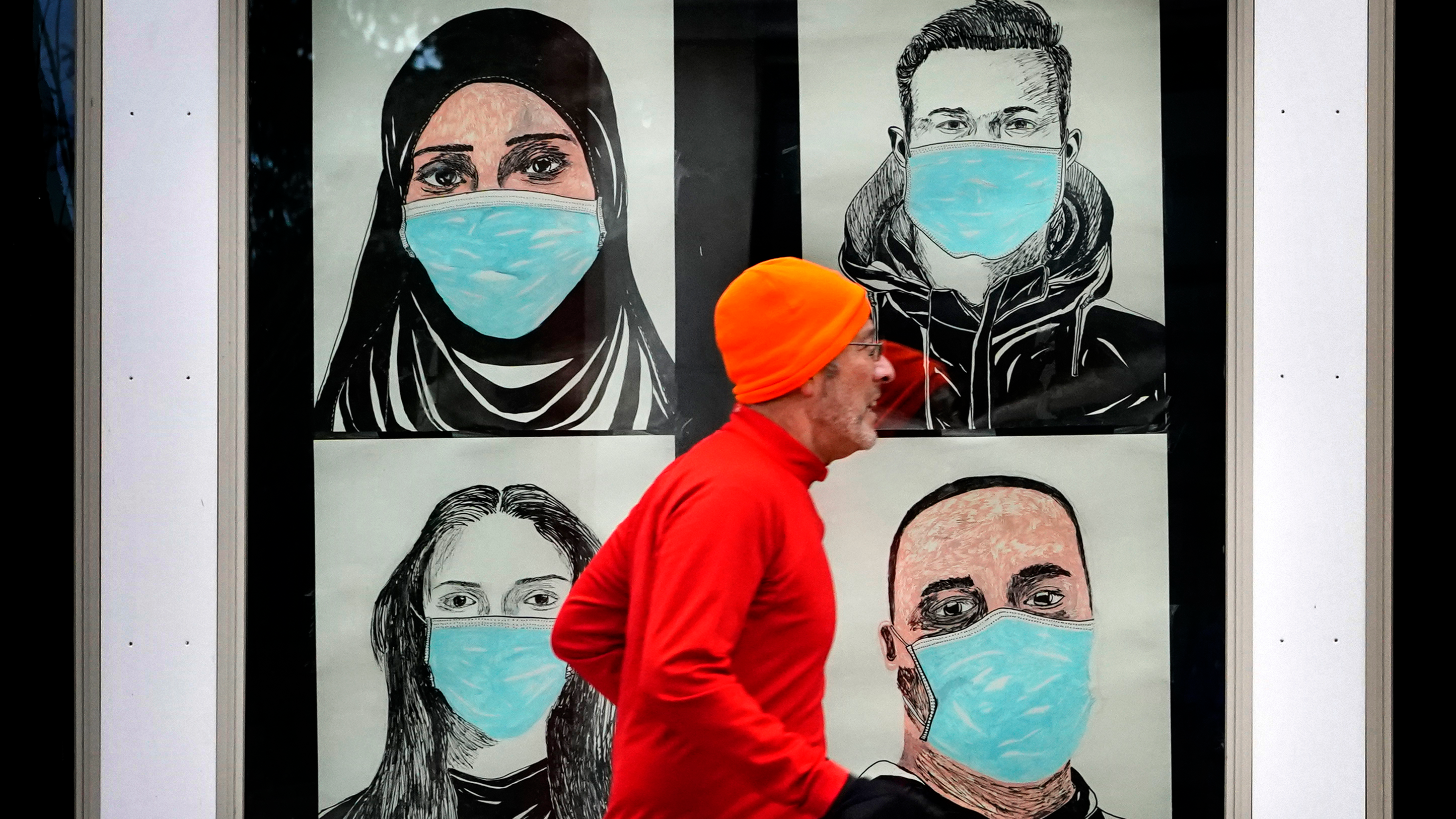
Despite significant development of COVID-19 vaccines in recent weeks, the northern hemisphere is preparing for a winter dealing with the pandemic. /Robert F. Bukaty/AP Photo
Despite significant development of COVID-19 vaccines in recent weeks, the northern hemisphere is preparing for a winter dealing with the pandemic. /Robert F. Bukaty/AP Photo
As winter arrives across Europe, coinciding with and likely fueling COVID-19's second wave, the distinction between the new coronavirus and the illnesses that traditionally flourish in cold weather – flu and the common cold – has never been more important.
Influenza, the common cold and SARS-CoV-2 – the virus that causes COVID-19 – are all forms of respiratory illnesses, they are spread through respiratory droplets or aerosols released by an infected person or via contaminated surfaces.
As we all now know, COVID-19 is caused by a coronavirus, a type of virus distinctive for their crown-like shape (corona is Latin for "crown"), while seasonal flu is usually caused by the influenza A and B viruses. The common cold, despite its singular name, is a blanket term for more than 200 viruses – up to 15 percent of colds are caused by coronaviruses, a percentage outweighed only by rhinoviruses (from the Greek "of the nose").
Despite this difference the symptoms of all three can feel very similar to an infected person, especially in early days of transmission.

The symptoms
With no real threat of fatality once infected, the common cold is considered the mildest of the viruses, with symptoms – coughing, fever, runny nose, headache – peaking within three days and usually requiring little to no treatment.
What marks out COVID-19 from other viruses is the extensive list of symptoms. In part they are the same as those of the flu – cough, sore throat, shortness of breath, aching muscles, fever and fatigue – but in certain cases COVID-19 infections can lead to vomiting and diarrhoea, while one of the most common and distinct symptoms is the loss of smell and/or taste.
An infected person can experience a combination of these symptoms, making it difficult to distinguish the viruses without testing. Also a particularly unlucky person can also have both the viruses at the same time.
READ MORE: How lethal is COVID-19 compared to cancer, accidents, flu and other causes?
COVID-19 is more serious than a "typical influenza infection," says Ian Jones, a professor of virology at the University of Reading.
"This virus appears to go further down into the lungs than would generally be the case, therefore giving you symptoms of pneumonia: the lungs becoming flooded, they don't function very well and the patient gets into breathing difficulty."
The vast majority of COVID-19 cases are mild and do not require hospitalization – just like the flu. But both viruses can lead to serious complications, including pneumonia, which can subsequently cause death.
The deeper the penetration into the lungs, the more damage is caused. Along with the lungs, COVID-19 may also damage the heart and brain, increasing the risk of long-term health problems.

Medical services across Europe are being stretched by the second wave of COVID-19. /Pavel Golovkin/AP Photo
Medical services across Europe are being stretched by the second wave of COVID-19. /Pavel Golovkin/AP Photo
The numbers
Despite its relatively benign reputation, every year the seasonal flu causes five million cases of severe illness worldwide, with the World Health Organization estimating an annual death toll of up to 650,000.
In the U.S. alone, more than 38 million people are predicted to contract seasonal flu this winter, 400,000 of whom will require hospitalization and 22,000 of whom are expected to die, according to the Centers for Disease Control and Prevention.
Those figures pale in comparison the destruction that COVID-19 has already caused to the U.S. – the world's worst-affected country in terms of deaths, with Johns Hopkins University recording more than 250,000 Americans passing in the ongoing pandemic, at the time of publication.
READ MORE The curious story of how the UK's Common Cold Research Unit became a holiday destination
Humans' ability to fight off the respective viruses, both naturally and via medication, differ greatly. Flu mutates, with different strains emerging each year or even changing in the midst of the flu season. In turn, scientists have developed annual vaccines to fight the virus and keep infection numbers down. This, along with a widespread familiarity with flu, dampens concern.
Conversely, fears around the new coronavirus are compounded by the lack of knowledge over its nature. Since the start of 2020 researchers from across the world have made remarkable, record-breaking progress on developing the treatments for and understanding of COVID-19, but questions remain to be definitively answered: What will the long-term effects be? Can I catch it again? Will it mutate into a more dangerous form?
What can you do?
Along with abiding by the restrictions of your respective country, there are many things you can do to avoid catching COVID-19, the flu and the common cold, from washing your hands and wearing a mask to avoiding large gatherings of people.
Additionally, taking a seasonal flu vaccine will help prevent you catching the disease and also ease the burden on health services. The best time to take a flu shot is in the early months of autumn, as they usually take two weeks to offer protection.

